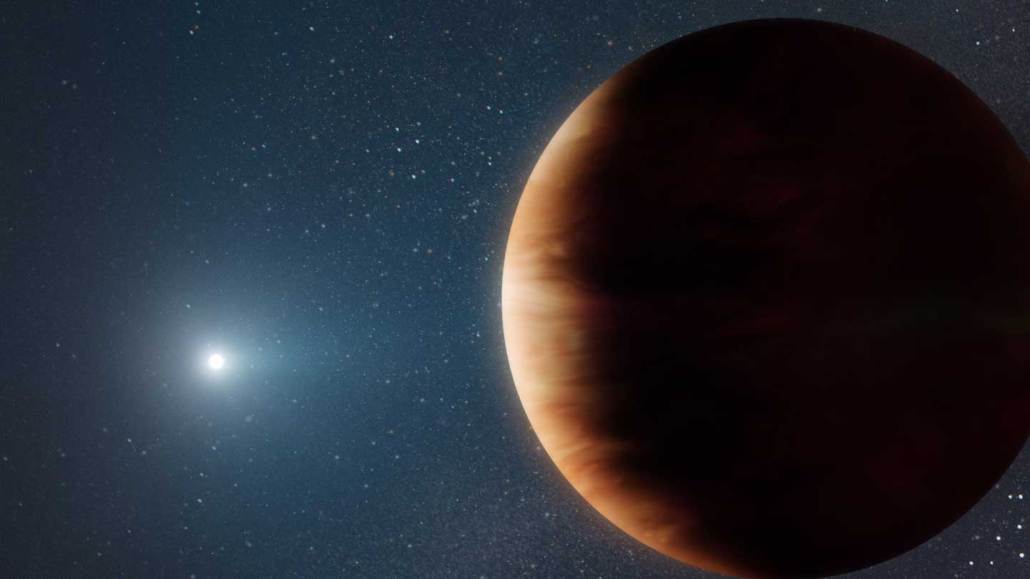
A white dwarf star (illustrated at left) barely illuminates a planet (right) whose mass and distance from its star resemble those of Jupiter.
W.M. Keck Observatory, Adam Makarenko
A glimpse of our solar system’s future has appeared thousands of light-years away in the constellation Sagittarius. There a giant planet like Jupiter orbits a white dwarf, a dim, dense star that once resembled the sun.
In 2010, that star passed in front of a much more distant star. Like a magnifying glass, the white dwarf’s gravity bent the more distant star’s light rays so that they converged on Earth and made the distant star look hundreds of times brighter. A giant planet orbiting the white dwarf star also “microlensed” the distant star’s light, revealing the planet’s presence.
In 2015, 2016 and again in 2018 astrophysicist Joshua Blackman of the University of Tasmania in Hobart, Australia and colleagues pointed the Keck II telescope in Hawaii at the far-off system, which lies some 5,000 to 8,000 light-years from Earth. The team was in search of the giant planet’s star, but saw, well, nothing.
“We expected that we’d see a star similar to the sun,” Blackman says. “And so we spent quite a few years trying to figure out why on Earth we didn’t see the star which we expected to see.”
After failing to detect any light from the spot where the planet’s star should be, Blackman’s team concluded that the object can’t be a typical star like the sun — also known as a main sequence star, which generates energy by converting hydrogen into helium at its center. Instead, the star must be something much fainter. The microlensing data indicate that the star is roughly half as massive as the sun, so the object isn’t massive enough to be a neutron star or black hole. But a white dwarf star fits the bill perfectly, the researchers report online October 13 in Nature.
“They’ve carefully ruled out the other possible lens stars — neutron stars and black holes and main sequence stars and whatnot,” says Ben Zuckerman, an astronomer at UCLA, who was not involved with the work. He notes that only a handful of planets have ever been found orbiting white dwarfs.
The new planet is the first ever discovered that is orbiting a white dwarf and resembles Jupiter in both its mass and its distance from its star. Blackman’s team estimates that the planet is one to two times as massive as Jupiter and probably lies 2.5 to six times farther from the white dwarf star than Earth does from the sun. For comparison, Jupiter is 5.2 times farther out from the sun than Earth is. The white dwarf is somewhat larger than Earth, which means the planet is much bigger than its host star.
The white dwarf formed after a sunlike star expanded and became a red giant star. Then the red giant ejected its outer layers, exposing its hot core. That former core is the white dwarf star.
Our sun will turn into a white dwarf about 7.8 billion years from now, so the new discovery is “a snapshot into the future of our solar system,” Blackman says. As the sun becomes a red giant, it will engulf and destroy its innermost planet, Mercury, and perhaps Venus too. But Mars, Jupiter and more distant planets should survive.
And Earth? No one yet knows what will happen to it.







